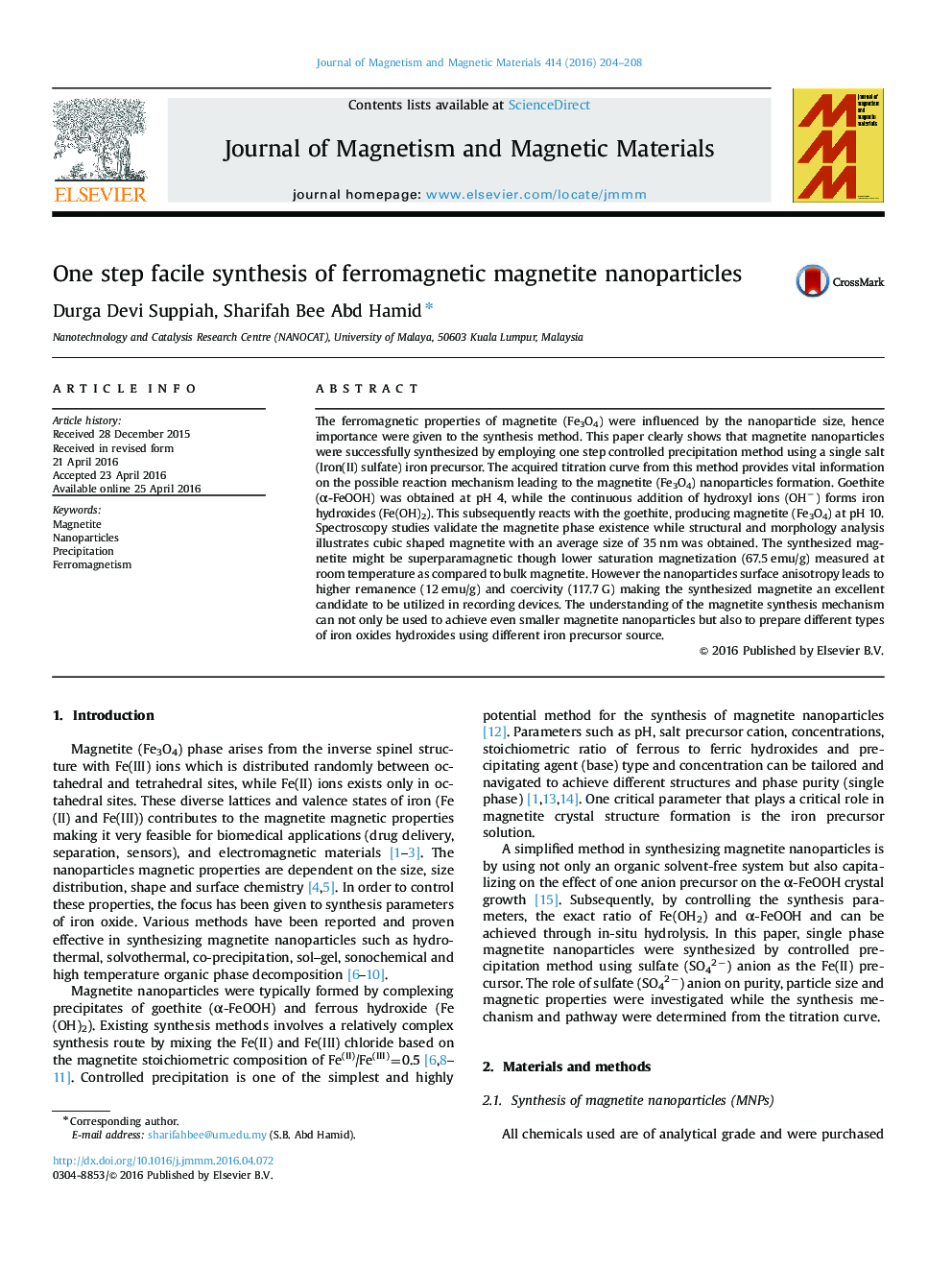| Article ID | Journal | Published Year | Pages | File Type |
|---|---|---|---|---|
| 1797984 | Journal of Magnetism and Magnetic Materials | 2016 | 5 Pages |
Abstract
The ferromagnetic properties of magnetite (Fe3O4) were influenced by the nanoparticle size, hence importance were given to the synthesis method. This paper clearly shows that magnetite nanoparticles were successfully synthesized by employing one step controlled precipitation method using a single salt (Iron(II) sulfate) iron precursor. The acquired titration curve from this method provides vital information on the possible reaction mechanism leading to the magnetite (Fe3O4) nanoparticles formation. Goethite (α-FeOOH) was obtained at pH 4, while the continuous addition of hydroxyl ions (OHâ) forms iron hydroxides (Fe(OH)2). This subsequently reacts with the goethite, producing magnetite (Fe3O4) at pH 10. Spectroscopy studies validate the magnetite phase existence while structural and morphology analysis illustrates cubic shaped magnetite with an average size of 35 nm was obtained. The synthesized magnetite might be superparamagnetic though lower saturation magnetization (67.5 emu/g) measured at room temperature as compared to bulk magnetite. However the nanoparticles surface anisotropy leads to higher remanence (12 emu/g) and coercivity (117.7 G) making the synthesized magnetite an excellent candidate to be utilized in recording devices. The understanding of the magnetite synthesis mechanism can not only be used to achieve even smaller magnetite nanoparticles but also to prepare different types of iron oxides hydroxides using different iron precursor source.
Related Topics
Physical Sciences and Engineering
Physics and Astronomy
Condensed Matter Physics
Authors
Durga Devi Suppiah, Sharifah Bee Abd Hamid,
